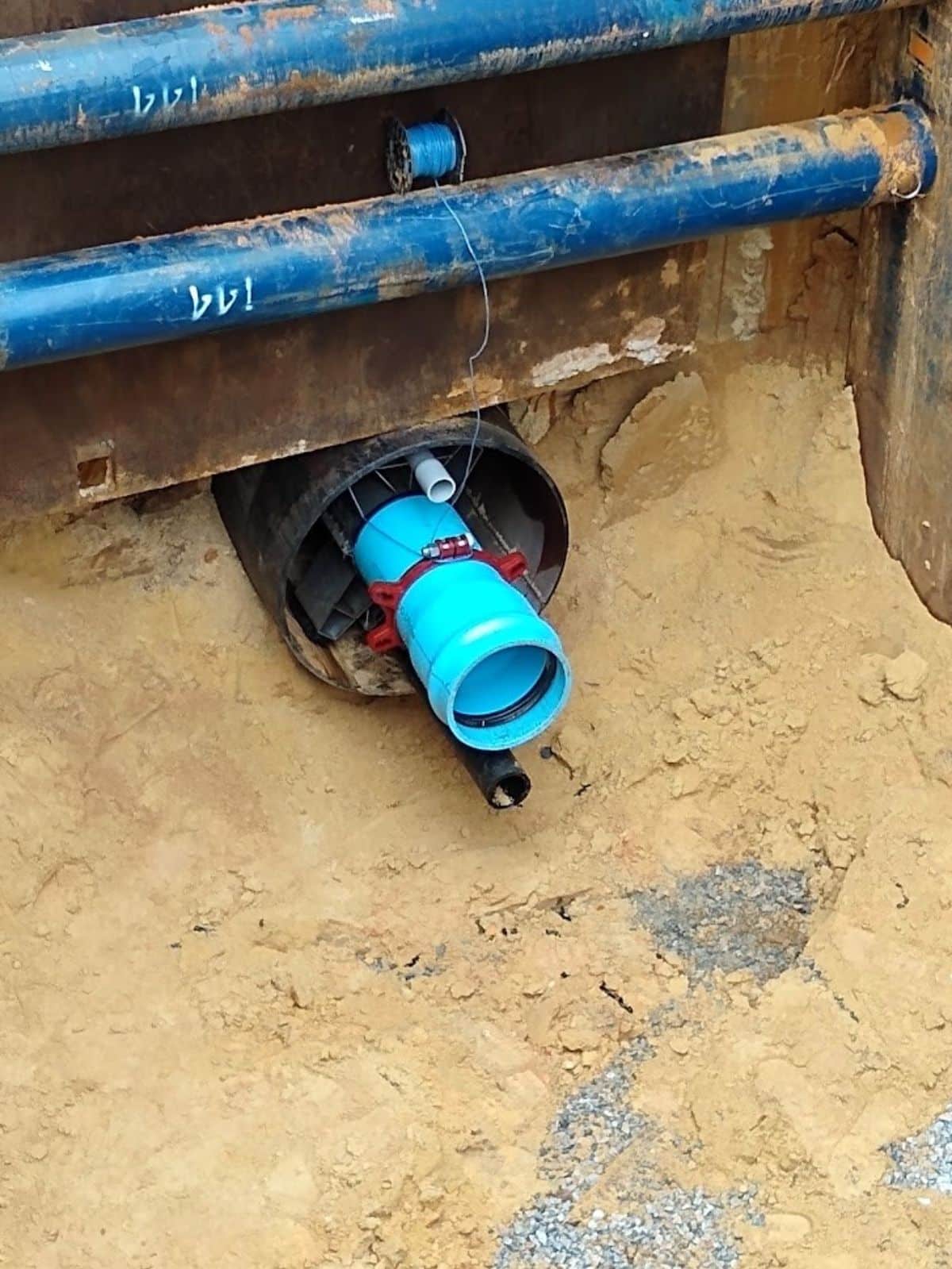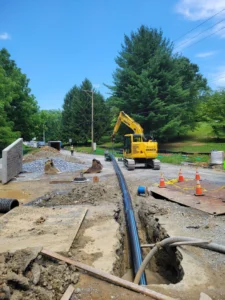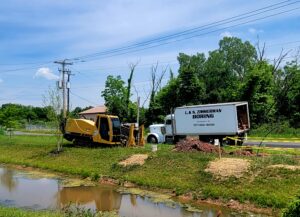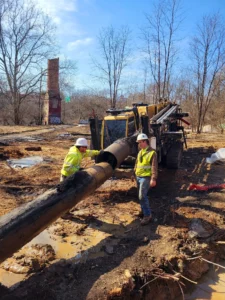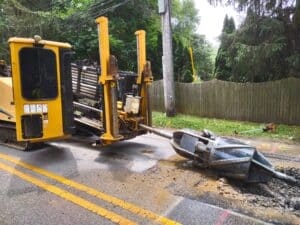Directional boring tends to throw people off at first glance. A contractor or homeowner compares quotes and sees horizontal directional drilling with the bigger number. But those per-foot numbers don’t tell the full story. Restoration work, traffic control, labor costs, and site cleanup can balloon trenching costs quickly — especially in areas with paved driveways, landscaping, or existing utility infrastructure below the surface.
When it comes to HDD vs open trench costs, a little education might save you some $.
Key Takeaways
- Directional boring can carry a higher price tag upfront but often lowers overall project costs
- Restoration, traffic control, and drilling rigs are major cost factors in a directional drilling project.
- Every underground utility installation is different. Cost depends more on surface disruption and soil conditions than distance alone, though these are all key factors.
- Real HDD project example: L&N Zimmerman switched a trenching plan to horizontal directional drilling and significantly reduced community impact and equipment needs.
Trenching Looks Cheaper, But Is It Really?
Horizontal directional drilling (HDD) and open trenching are two methods for installing underground utilities, but they differ in approach and impact.
HDD is a trenchless method that bores a path underground, allowing you to install pipes or conduits beneath obstacles like roads, driveways, and landscaping without disturbing the surface. It’s ideal for urban areas or any project where minimizing surface disruption is critical.
Open trenching, on the other hand, involves digging a trench from the surface down to the desired depth, placing the utility line, then backfilling and restoring the surface. It’s typically faster and cheaper in wide-open or rural spaces where restoration isn’t a major concern or significant factor in the decision.
Directional drilling isn’t always cheaper upfront. But once you look at the full picture — project complexity, labor costs, material costs, and long-term surface restoration — it often wins the cost battle.
When Is Open Trenching Actually Cheaper?
Open trenching wins in many scenarios: mostly wide open spaces with little above-ground risk. If you’re running underground utility lines through fields, pastures, or rural areas with no landscaping and soft soil, traditional trenching is quick and affordable with the right equipment.
You don’t need much specialized equipment, labor costs stay low, and there’s barely anything to restore when the job’s done. In ideal soil conditions, we can open trench 1,000 feet a day with ease.
But that all changes the minute you hit a curb, sidewalk, gas line, mature trees & landscaping, and asphalt or concrete restoration is involved.
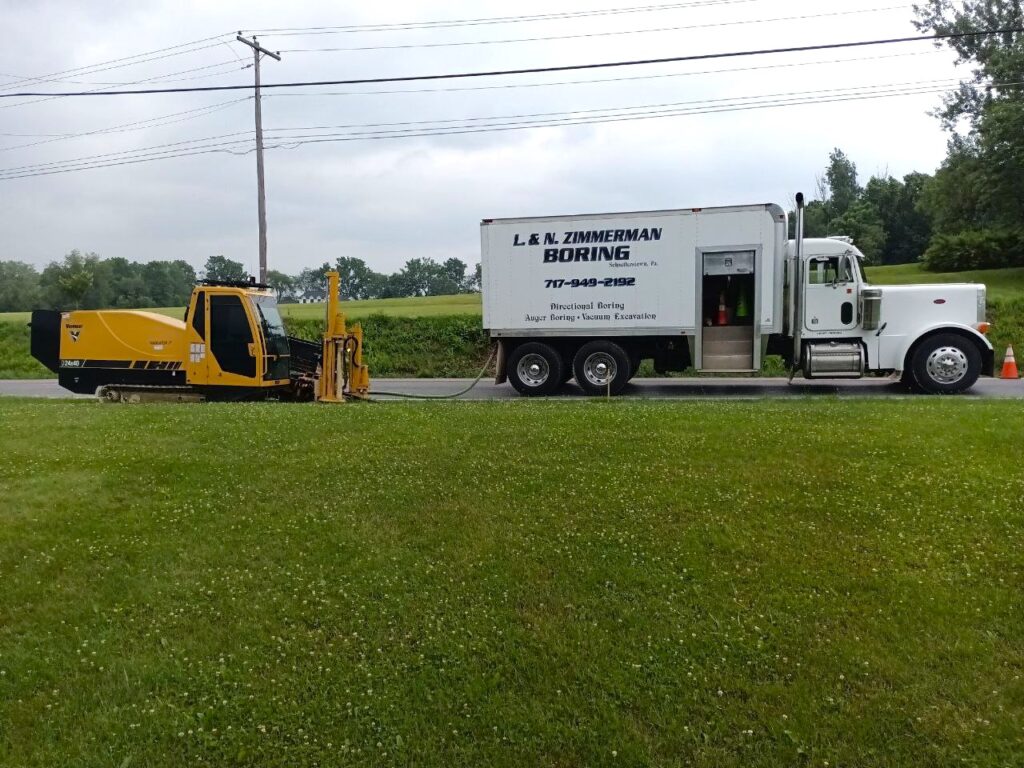
When HDD Is the Smarter Financial Choice
Start adding driveways, patios, existing utility lines, or city streets into the mix and HDD starts pulling ahead fast. Horizontal directional drilling means you don’t have to tear up concrete, repave asphalt, do as much site cleanup, or replant every tulip that gets torn out of a front yard. That’s a huge factor in lower costs.
Directional boring is often the best option for:
- Urban areas with heavy traffic and strict permitting
- Jobs near gas lines, large boulders, or existing infrastructure
- Projects where minimal disruption is needed for businesses or homeowners
- Environmentally sensitive areas that can’t be disturbed
Yes, HDD requires specialized boring equipment and experienced directional bore operators. But it skips over all the surface restoration that trenching makes unavoidable — often saving thousands in project expenses.
“If you’re working in front yards or tight spaces, HDD is almost always the more cost-effective option.” – Laverne at L&N Zimmerman
Let’s Talk Real Costs: It’s Not Just About Per Linear Foot Pricing
It’s tempting to ask, “How much does directional boring cost per foot?” But that’s just the tip of the pricing iceberg.
Directional drilling has higher costs per linear foot, but it also tends to bring fewer surprises. That price includes specialized equipment, drilling fluid systems, skilled directional bore operators, and precise pilot hole guidance.
Trenching? It may start cheap, but trenching costs can increase rapidly when you account for:
- Asphalt or concrete replacement
- Sod and landscaping repair
- Equipment rental costs for dump trucks and compactors
- Labor for site cleanup, traffic control, and flagging crews
Other factors affect both methods and can make for additional costs: soil types like rocky soil or soft soil, ground conditions, pipe size, and the project’s size all contribute to increased costs. And the longer your installation path, the more likely project expenses will climb if restoration is needed.
One overlooked factor: HDD reduces weather delays and minimizes schedule overruns. That’s real money saved in labor costs and project overruns.
“Easiest” Isn’t Always the Same Thing
If the site is a grassy field, open trenching is about as simple as it gets. Pull up with an excavator, trench it out, drop the pipe, backfill, and you’re done.
But try that same thing in a residential neighborhood — now you’re tearing up yards, sidewalks, and driveways. You’ll need restoration crews, landscapers, and weeks of cleanup. In those cases, directional drilling becomes the cleanest and most efficient method.
“Directional drilling brings its own complexity, but it can be the easiest way to do a complex job.”
Real Job Example: Why One Contractor Ditched the Trenching Plan
One of L&N Zimmerman’s recent infrastructure projects started as a standard open trench bid. But the contractor looked at the surface disruption required and proposed a switch to horizontal directional drilling.
The engineers approved it. From there, everything moved more smoothly: there was less equipment on-site, reduced traffic interference and surface restoration, lower labor costs across the board, and no front-yard destruction for the nearby homes.
Residents were happy. The project was quieter and cleaner. And the contractor is already planning to use HDD again for phase two.
Does L&N Zimmerman Handle Small Residential boring Projects?
Yes! At L&N Zimmerman Excavating, we handle everything from 15-foot residential driveway crossings to multi-thousand-foot utility installs. HDD is especially helpful in small projects where homeowners want to avoid long-term settling or the hassle of repaving driveways and walkways.
It’s Not Always About the Cheapest Quote, Either – Give Us a Call Today
Directional boring vs trenching isn’t just about who has the lower bid.
The smartest decision factors in everything: restoration, traffic disruption, labor costs, material costs, equipment rental, drilling fluid needs, pilot hole accuracy, and future-proofing. Ground conditions, project scope, and existing infrastructure all play a role.
Horizontal directional drilling HDD might carry a higher per-foot cost, but with lower total project costs and minimal disruption, it’s often the better long-term investment. When you factor in enhanced durability and lower site cleanup needs, it’s easy to see why HDD is often the preferred method.
L&N Zimmerman helps you make the right call for your underground utility installation. Let’s talk through the project and find the best fit for your site, your timeline, and your budget. Call today for a free horizontal drilling quote.

